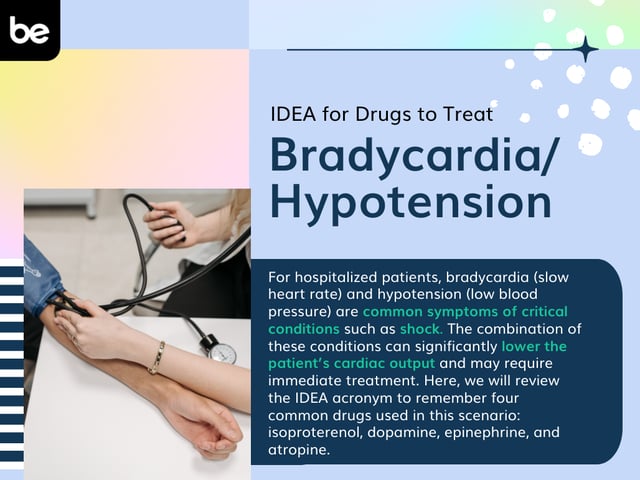
The Most Common Question Types on the NCLEX-RN Exam
Did you know over 6 million nursing hopefuls have taken an NCLEX exam? No matter what state you live in, the NCLEX-RN exam is a critical part of becoming a registered nurse.
The current overall pass rate for all candidates is only around 70%. Your best chance is to pass the exam on the first try (88%). After that, the pass rate drops in half to around 50%.
The NCLEX-RN is challenging, but you can challenge it right back. By knowing the type of exam questions and studying accordingly, you can join the ranks of 3 million dedicated RNs across the U.S.
NCLEX-RN Exam Basics
The NCLEX-RN exam is managed by the National Council of State Boards of Nursing (NCSBN). It’s part of the nurse licensing process in many places:
-
All 50 U.S. states
-
District of Columbia (D.C.)
-
American Samoa
-
Guam
-
Northern Mariana Islands
-
U.S. Virgin Islands
-
Canada
-
Australia
Pearson VUE currently administers the exam at applicable testing centers. To take the test, you must register with both Pearson and your Nursing Regulatory Body (NRB).
In April of 2023 the exam was updated and rebranded as the Next Generation NCLEX (NGN). While the core of the test remains the same, changes include a greater emphasis on correct nursing actions with the introduction of case study questions, a smaller maximum question number and exam length, and the ability to earn partial credit.
Importance of the NCLEX-RN Exam
NCLEX exams determine if you have the necessary knowledge and abilities to perform nursing duties. This isn’t limited to standard academic benchmarks like reading levels. It also tests your critical thinking and analysis skills.
Every state has different requirements for earning your nursing license. However, you cannot get a nursing license in any state unless you pass the NCLEX-RN exam.
Even if you have an accredited nursing degree, there is no equivalent substitute for this exam. You cannot legally work in any job field that requires a nursing license without it, according to U.S. laws and regulations.
NCLEX-RN Testing Format
The exam mostly uses Computer Adaptive Testing (CAT) format. This format is dynamic, meaning your questions change depending on your answers:
-
Wrong answer -> next question is easier
-
Right answer -> next question is more difficult
This format does not allow test-takes to skip questions. You cannot go back and change your answers either. It’s important to consider each question carefully before selecting your final answer.
Many people answer the questions they know first and go back to more difficult questions later. The CAT format can be an adjustment if you’re used to this strategy.
If you’ve never taken a CAT test before, it’s recommended to try practice tests with this format to help you adjust. NCLEX-RN exam practice can also help reduce uncertainty and test anxiety.
NCLEX-RN Exam Questions
The NCLEX-RN uses Bloom’s Taxonomy Model to form questions and answers. It has six fundamental skill levels:
-
Remember
-
Understand
-
Apply
-
Analyze
-
Evaluate
-
Create
This model not only tests your basic knowledge but how you apply that knowledge to your nursing abilities. This includes all the appropriate ways you must:
-
Follow procedures
-
Evaluate clients
-
Analyze information
-
Assess situations
-
Make decisions
-
Solve problems
-
Communicate effectively
-
Prioritize care
-
Avoid safety issues
Memorization alone won’t ensure you answer all the NCLEX-RN exam questions correctly. You must also choose the proper responses to different situations. For this reason, many test-takers struggle with the exam, even if they study the exam material faithfully.
NCLEX-RN Exam Question Formats
You can boost your NCLEX-RN question-answer success by knowing how to break down the questions. Most questions follow the standard multiple choice format, but some questions use alternative formats.
1. Multiple Choice
Multiple choice questions (MCQs) are the standardized testing format of choice. Most people become familiar with MCQs in grade school. There are two main versions:
-
Only one answer is correct
-
More than one answer is correct
Your exam should clearly indicate when one only answer is correct vs. multiple answers. Multi-answer MCQs can also include answers such as “none of the above” or “all of the above.”
This format has three main parts:
-
Stem (question)
-
Correct answer(s)
-
Distractors (completely wrong answers)
Many MCQs also include an answer that is partially correct or close to the correct answer. This is to prevent you from guessing entirely if the distractors are obviously wrong.
The stem will generally contain all the relevant information you need to determine what type of answer is correct. This can include certain qualifying keywords, such as:
-
Always
-
Never
-
Best
-
Worst
-
Not
-
Except
-
Only
-
Every
-
None
These keywords can change the correct answer depending on how they’re used. For example, consider the difference between these questions and how the wording affects which answer will be correct:
-
Which factor impacts a client’s body temperature?
-
All of these factors can impact a client’s body temperatures, except:
-
Which factors can impact a client’s body temperature? Select all that apply.
-
Which factor has the most significant impact on a client’s body temperature? Choose the best answer.
-
What factor always impacts a client’s body temperature?
-
What factor(s) can impact a clients body temperature? More than one answer may be correct.
If you read too fast over the question, you may miss the wording differences that change an answer’s outcome. Around 60-80% of your test questions will be MCQs.
2. Fill-In-the-Blank
Some questions will not give you any answer choices at all. You must either calculate, remember, or deduce the correct answer from context and memory.
Most NCLEX-RN exam questions that fill in a blank will be mathematical calculations. For example, you may be asked to manually calculate an IV drip rate.
You may also have to convert between metric (kilo, mili, centri) and imperial (feet, cups, pounds) measurements. Always double-check what unit of measurement the question is asking for.
3. Ordered Response
As a nurse, you will need to follow proper step-by-step procedures. NCLEX-RN exam questions will make sure you know the right order of steps, scales, and phases.
For example, you may be asked to put the four phases of pain in sequential order. Or they might ask you to arrange the proper order of steps for inserting a catheter.
This question format may have you select only one answer like a standard multiple-choice question. It can also use a drag-and-drop function so you can arrange the answers appropriately.
4. Hot Spots
Anatomy and physiology are also important to nursing. Some NCLEX-RN NGN exam questions will ask you to identify certain areas accurately on a picture or chart, or to highlight portions of text that are correct.
For example, you may have to select the proper area to listen for a heart murmur. Or you may be asked to select an abnormality on an X-ray. These questions are similar to multiple-choice questions with graphics, so make sure to differentiate between hot spot questions and MCQs.
5. Case Studies
On the NCLEX-RN exam, 18 items will be dedicated to three in-depth clinical judgment case studies. New to the Next Generation NCLEX, this question type is based on the six domains of the NCSBN Clinical Judgment Measurement Model (NCJMM) to better assess the dynamic, evolving nature of nursing care. Unlike the rest of the exam, these questions are static and not computer adaptive. These questions will require test-takers to:
-
Recognize Cues: Spot important data from varied sources, like symptoms or medical records.
-
Analyze Cues: Understand the correlation between identified cues and the overall clinical scenario.
-
Prioritize Hypotheses: Rank potential scenarios by their urgency, risk, or other relevant factors.
-
Generate Solutions: Propose viable treatments or interventions as per the assessed situation.
-
Take Action: Execute on the top-priority interventions or solutions.
-
Evaluate Outcomes: Assess the actual results against the expected outcomes post-intervention.
Given that clinical judgment is a holistic process, these case studies will span across multiple intertwined areas, demanding not just recall but application and analytical skills. As you prepare, focus on how these domains interplay in real-world nursing contexts.
NCLEX-RN Exam Question Categories
The NCLEX-RN exam is grounded in the knowledge of four main nursing areas:
-
Safe and Effective Care Environment
-
Health Promotion and Maintenance
-
Psychosocial Integrity
-
Physiological Integrity
Some of these sections include subsections. A certain percentage of the test questions will be dedicated to each section and subsection.
1. Safe and Effective Care Environment
A client safety and comfort are paramount to healthcare success. This section ensures you can provide client care that is high-quality and effective. It contains the biggest percentage of questions overall.
Management of Care (15%-21%)
The Management of Care subsection will have questions about your responsibilities and your client’s rights. This includes:
-
Advance directives
-
Advocacy
-
Assignment, delegation, and supervision
-
Case management
-
Collaboration and management concepts
-
Confidentiality/information security
-
Continuity of care
-
Establishing priorities
-
Ethical practice
-
Informed consent
-
Legal rights and responsibilities
-
Information technology
-
Performance improvement
-
Referrals
This section asks you how to properly respond in client care scenarios. For example, you may be asked to prioritize incoming clients, comfort agitated loved ones or delegate tasks.
Safety and Infection Control (10%-16%)
The Safety and Infection Control section makes sure you know how to appropriately prevent, identify, and respond to safety and health hazards. It includes:
-
Prevention
-
Emergency response plan
-
Ergonomic principles
-
Hazardous materials
-
Home safety
-
Reporting Incidents
-
Safe equipment use
-
Security plan
-
Precautions
-
Restraints and safety devices
-
Surgical asepsis
These questions will include potential or actual hazards occurring in various client care scenarios. For example, you may be asked to identify the first step in cleaning up a hazardous material spill, or how to identify the signs of an infection.
2. Health Promotion and Maintenance (6%-12%)
The Health Promotion and Maintenance section goes over healthcare as it relates to the stages of human development. This includes:
-
Aging process
-
Pregnancy, birth, and newborn care
-
Developmental transitions and stages
-
Health promotion and disease prevention
-
Health screening
-
High-risk behaviors
-
Lifestyle choices
-
Self-care
-
Physical assessment techniques
Questions from this section will give you clients of various ages. You must select the best answer appropriate for their stage of growth and development.
3. Psychosocial Integrity (6%-12%)
The Psychosocial Integrity section recognizes that mental, emotional, and social care are just as important as physical care. This encompasses:
-
Abuse/neglect
-
Behavioral interventions
-
Coping mechanisms
-
Crisis intervention
-
Cultural awareness
-
End-of-life care
-
Family dynamics
-
Grief and loss
-
Mental health concepts
-
Religious and spiritual influences
-
Sensory/perceptual alterations
-
Stress management
-
Substance use
-
Support systems
-
Therapeutic communication and environment
For these questions, you’ll have to analyze client signs that point to issues like abuse, stress, and substance use. You may also be asked how to ensure proper care and support will not further risk client safety.
4. Physiological Integrity
This section is the largest by content. Physiological relates to the regular functions of a body’s system. This includes focusing on how to maintain everyday health and quality of life, as well as adjusting to health conditions.
Basic Care and Comfort (6%-12%)
The Basic Care and Comfort subsection goes over the promotion of good health practices, such as proper hygiene and nutrition. It includes:
-
Assistive devices
-
Elimination
-
Mobility and immobility
-
Non-pharmacological comfort interventions
-
Nutrition and oral hydration
-
Personal hygiene
-
Rest and sleep
The questions relating to this section will ask you to help clients find the most effective strategies for basic quality of life. This can mean reducing pain, encouraging exercise and movement, and assisting with impaired bodily functions.
Pharmacological and Parenteral Therapies (13%-19%)
The Pharmacological and Parenteral Therapies section deals with your nursing duties in medication and therapy. This means extensive knowledge of:
-
Medication effects
-
Blood and blood products
-
Central venous access devices
-
Dosage calculation
-
Expected actions and outcomes
-
Medication administration
-
Parenteral and intravenous therapies
-
Pharmacological pain management
-
Total Parenteral Nutrition (TPN)
These questions will make sure you know how to properly give medication to clients, and spot any signs of adverse reactions. It also quizzes you on how to choose and manage proper client therapies.
Reduction of Risk Potential (9%-15%)
The Reduction of Risk Potential subsection relates to the process of adjusting care to ensure you’re using the most effective and safe practices. This means knowing about:
-
Vital signs
-
Diagnostic tests
-
Laboratory values
-
Body system alterations
-
Complications of diagnostic tests, treatments, and procedures
-
Surgical procedures and health alterations
-
System specific assessments
-
Therapeutic procedures
Relevant questions test you on your ability to properly identify risk by age, health conditions, and other critical factors. You’ll also be asked how to identify and respond to risks as they occur.
Physiological Adaptation (11%-17%)
The last subsection, Physiological Adaption, seeks to maintain or support body functions for clients with serious and/or ongoing health issues. This includes:
-
Body systems alterations
-
Fluids and electrolytes
-
Hemodynamics
-
Illness management
-
Medical emergencies
-
Pathophysiology
-
Therapy responses
This subsection gives you client care scenarios where you must identify health conditions along with their causes and sources. You’ll also be asked to formulate the best responses and recommendations for the relevant condition.
How Long Is the NCLEX-RN Exam?
This material can look intimidating in list form. It may seem like you’ll be tested all day and into the night.
Fortunately, the NCLEX-RN Exam has a fairly standard test time. You’ll be given a maximum of five hours for completion, which includes the option for two short breaks.
The CAT testing format is dynamic, so you may not be asked every single question. Your question range will be from 85 (minimum) to 150 (maximum). The NCLEX also includes a run-out-of-time rule for takers who don’t finish on time.
Challenge the NCLEX-RN Exam
Many test-takers fail because they cannot passively read the material and still develop the skills needed to solve complex problems. You can master the exam by using effective study tools.
There are free NCLEX-RN practice exams that use questions similar to the official exam. They include relevant question formats and categories. This helps you hone your abilities along with cementing your foundational knowledge.
Your Nursing Career Is Waiting! Get Started on Mastering the Exam Today
The NCLEX-RN Exam can be a challenge if you aren’t prepared. Nurses can’t rely on memorizing facts and figures. They must respond to certain signs, situations, and scenarios to ensure the best healthcare outcomes.
Do you want to master the NCLEX-RN on your first try? We have all the resources you need to get started. Create your free account today!
Keep Reading

National Council Licensure Examination-Registered Nurse Blog
What to Expect in Nursing School Clinicals
The clinical experience is a rite of passage for all nursing students, …

National Council Licensure Examination-Registered Nurse Blog
What is the NCLEX Next Generation (NGN) Exam?
If you’re interested in becoming a registered nurse, you likely know th…

National Council Licensure Examination-Registered Nurse Blog
IDEA for Drugs to Treat Bradycardia/Hypotension
For hospitalized patients, bradycardia (slow heart rate) and hypotensio…